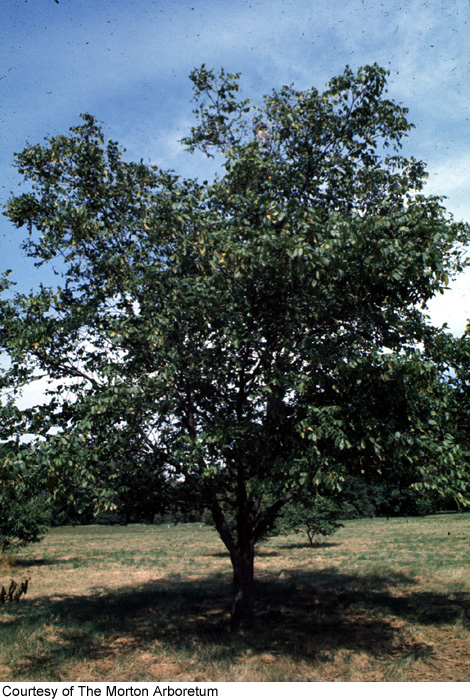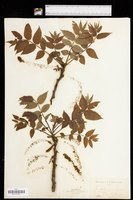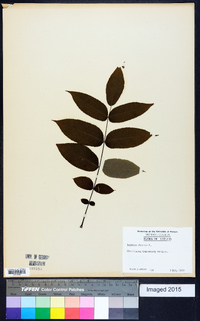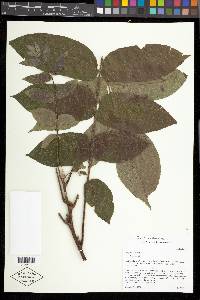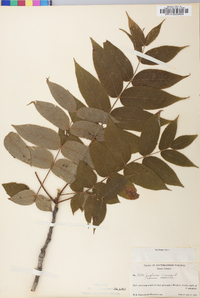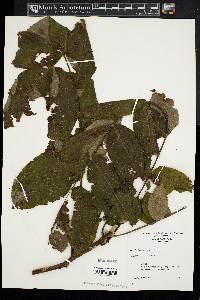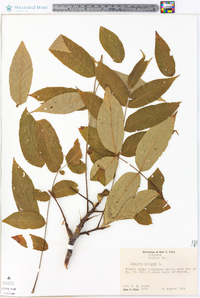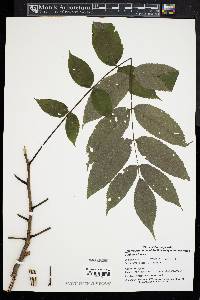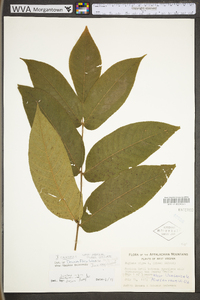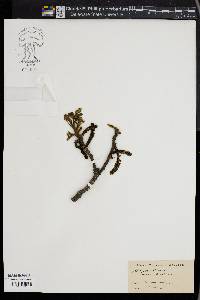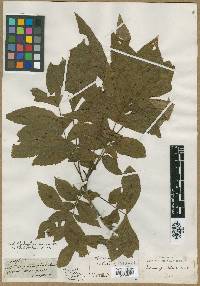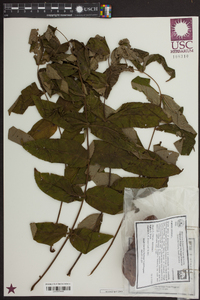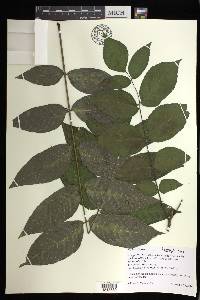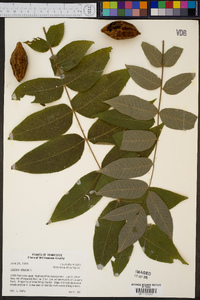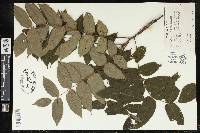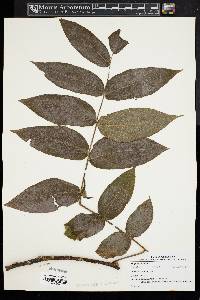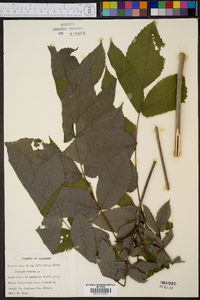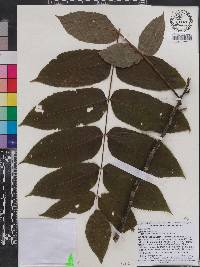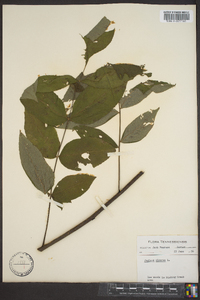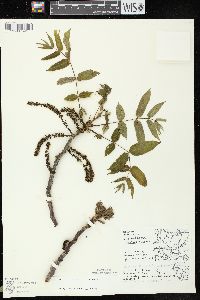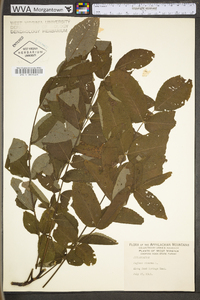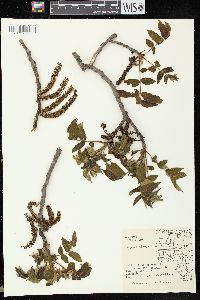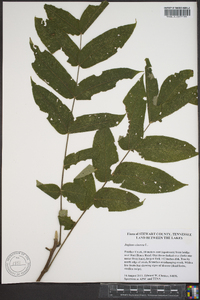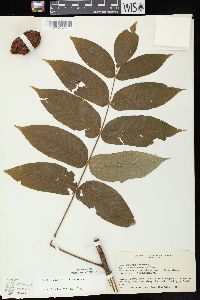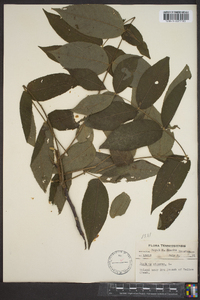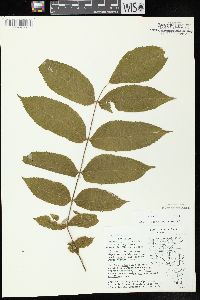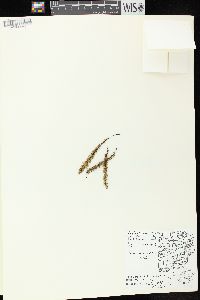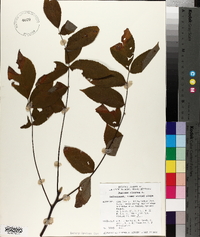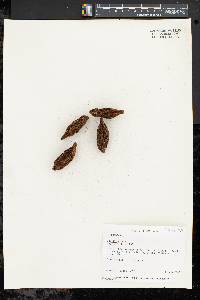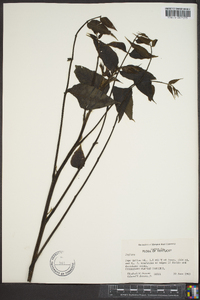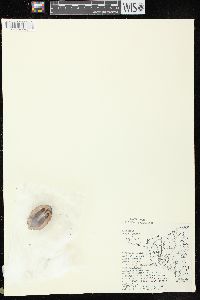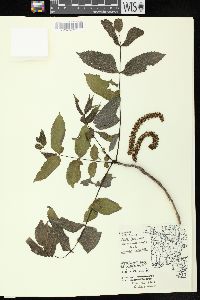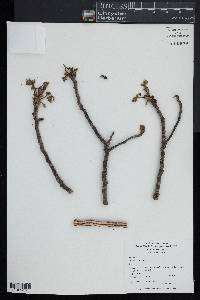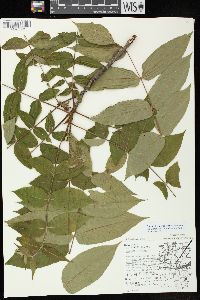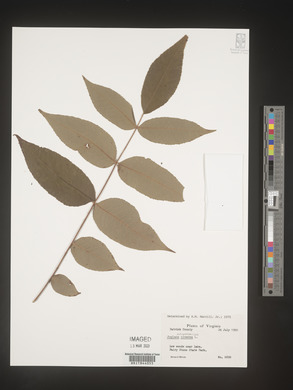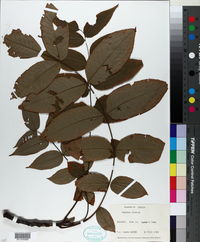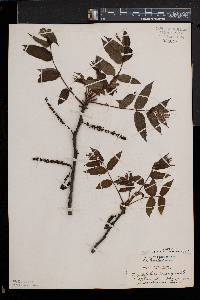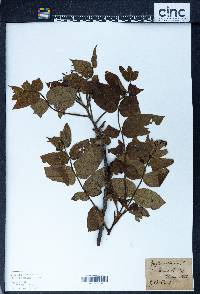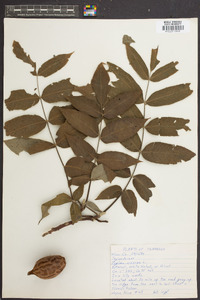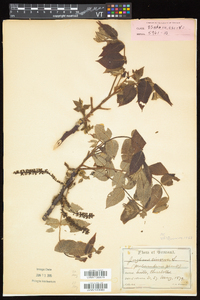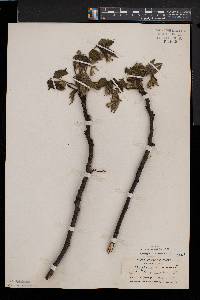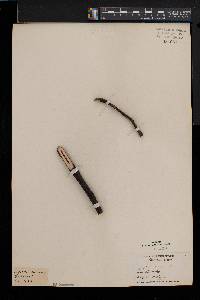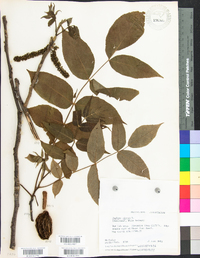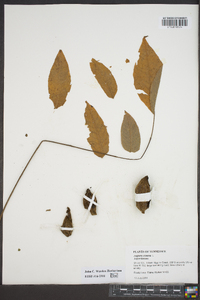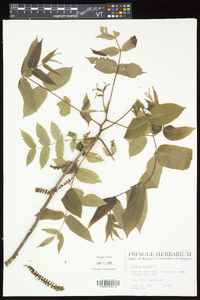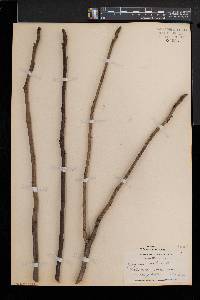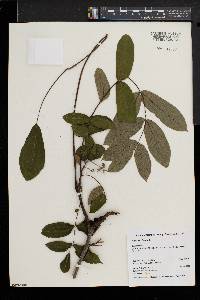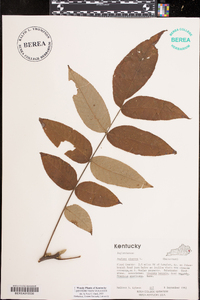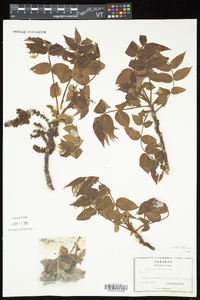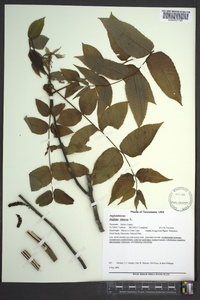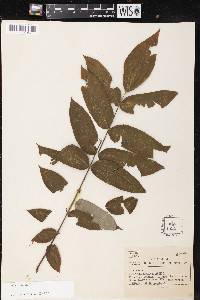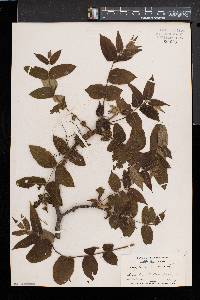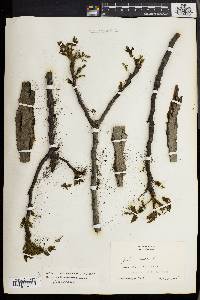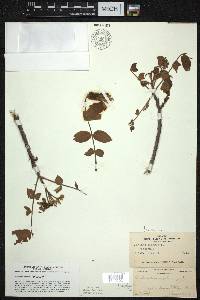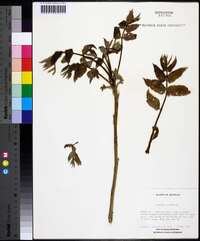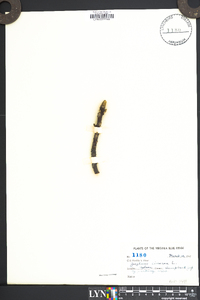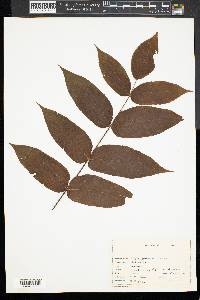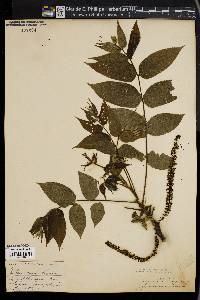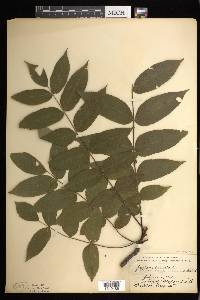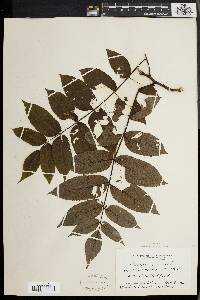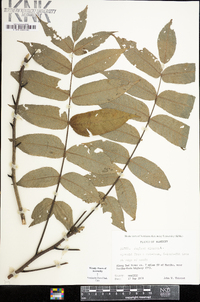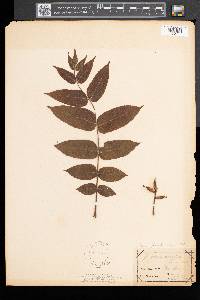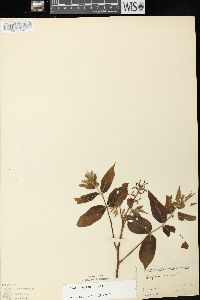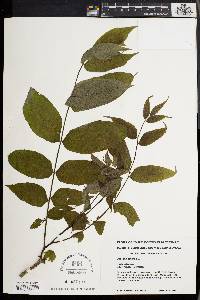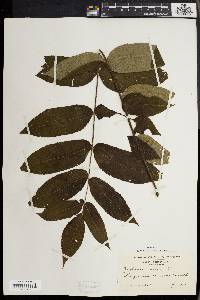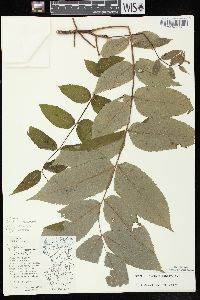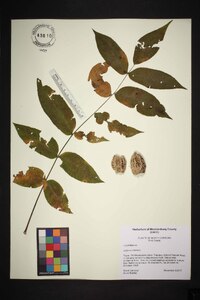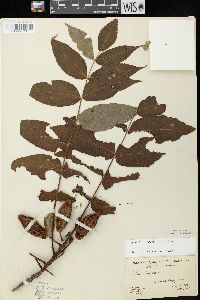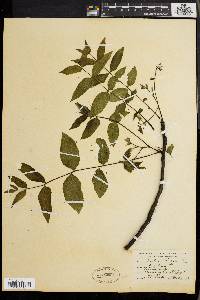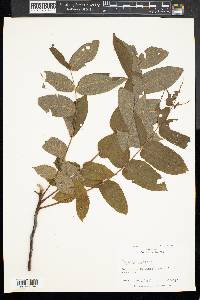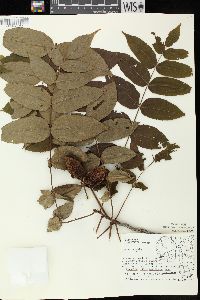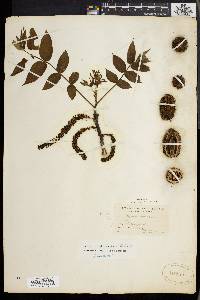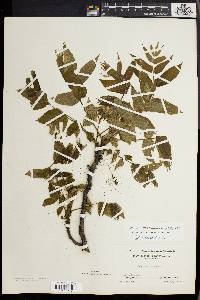Juglans cinerea
|
|
|
|
Family: Juglandaceae
butternut, more...White Walnut
[Wallia cinerea Alef.] |
Trees , to 20(-30) m. Bark light gray or gray-brown, shallowly divided into smooth or scaly plates. Twigs with distal edge of leaf scar straight or nearly so, bordered by well-defined, tan-gray, velvety ridge; pith dark brown. Terminal buds conic, flattened, 12-18 mm. Leaves 30-60 cm; petiole 3.5-12 cm. Leaflets (7-)11-17, ovate to lanceolate or oblong-lanceolate, ± symmetric, (2.5-)5-11(-17.5) × 1.5-6.5 cm, margins serrate, apex acuminate; surfaces abaxially with abundant 4-8-rayed fasciculate hairs, scales, and sometimes capitate-glandular hairs, axils of proximal veins with prominent tufts of fasciculate hairs, adaxially with scattered fasciculate hairs or becoming glabrescent; terminal leaflet present, usually large. Staminate catkins 6-14 cm; stamens 7-15 per flower; pollen sacs 0.8-1.2 mm. Fruits 3-5, ellipsoid to ovoid or cylindric, 4-8 cm, smooth, with dense capitate-glandular hairs; nuts ellipsoid to subcylindric or ovoid, 3-6 cm, surface with ca. 8 high, narrow, longitudinal main ridges, with narrow, interrupted, longitudinal ridges or lamellae between main ridges. Flowering spring (Apr-Jun). Rich woods of river terraces and valleys, also dry rocky slopes; of conservation concern; 0-1000 m; N.B., Ont., Que.; Ala., Ark., Conn., Del., Ga., Ill., Ind., Iowa, Ky., Maine, Md., Mass., Mich., Minn., Miss., Mo., N.H., N.J., N.Y., N.C., Ohio, Pa., R.I., S.C., Tenn., Vt., Va., W.Va., Wis. The butternut canker is killing Juglans cinerea across its range. Because the trees do not root-sprout, the range is contracting.
Tree to 20 m tall, trunk 30 cm - 0.6 m in diameter Leaves: alternate, pinnately compound, 25 - 50 cm long, with eleven to seventeen leaflets. Flowers: either male or female, found on the same plants (monoecious), male flowers clustered in hanging catkins 6 - 14 cm long, female flowers (8 mm long) solitary or few on a stalk. Fruit: a nut surrounded by a husk, 4 - 8 cm long, 3 cm wide, solitary or in small clusters. The husk is green, lemon-shaped, and sticky-haired. Nuts enclosed by a 3 - 6 cm long, ridged, two-celled shell. Bark: light gray and smooth, developing smooth ridges and shallow plates, inner bark turning yellow when exposed. Twigs: stout, orangish brown to green with rust-colored hairs when young, becoming light gray and smooth. The center of the twig (pith) is divided into dark brown chambers. Terminal buds: brown, 1.2 - 2 cm long, oblong to conical, flattened, hairy. Leaflets: short-stalked with stalk of terminal leaflet longest, yellowish green above, pale beneath, 5 - 11 cm long, 1.5 - 6.5 cm wide, egg-shaped to narrow oblong, finely toothed, rough-haired above and soft-haired beneath. Foliage smells like fresh hay or paint when crushed. Lateral buds: small and egg-shaped. Leaf scar: resembling a monkey's face, with a line of tannish gray velvety hairs along the top margin and three U-shaped vascular bundle scars. Similar species: The similar Juglans nigra usually lacks a terminal leaflet, has spherical fruit, dark brown to grayish black bark, cream-colored pith, a short terminal bud, and the leaf scar is deeply notched at the top and lacks hair on the upper margin. Flowering: late April to mid May Habitat and ecology: Mesic woods, moist river slopes, bluff savannas, wooded floodplains and calcareous slopes with springs. Occurence in the Chicago region: native Notes: Juglans cinerea wood is used to make furniture, cabinets, and interior trim. An orange-yellow dye was once removed from the husk and inner bark to dye clothing. A sweet syrup can be produced from the sap. Etymology: Juglans comes from the Latin name for walnut, which is derived from the words jovis, meaning "of Jupiter," and glans, meaning acorn. Cinerea comes from the Latin word meaning ash-colored, referring to the bark. Author: The Morton Arboretum Tree to 30 m; bark grayish-brown, with smooth ridges; pith dark brown; a dense pad of short hairs often present long the upper margin of old lf-scars; lfls 11-17, oblong-lanceolate, acuminate; pubescence, especially of the lower lf-surface, largely or wholly of stellate, few-rayed hairs; fr ovoid- oblong, 4-7 cm, somewhat pointed; nut ovoid to short-cylindric, longer than thick, very rough, marked with 2 or4 obscure longitudinal ridges. Rich, moist soil; N.B. to Minn., s. to S.C., Ga., and Ark. (Wallia c.) Gleason, Henry A. & Cronquist, Arthur J. 1991. Manual of vascular plants of northeastern United States and adjacent Canada. lxxv + 910 pp. ©The New York Botanical Garden. All rights reserved. Used by permission. From Flora of Indiana (1940) by Charles C. Deam An infrequent tree throughout the state and probably absent from Benton and Newton Counties. It is local in its distribution and generally only a few trees are found in a locality. I have seen it only a few times as a frequent tree and then only over small areas. Its preferred habitats are terraces and banks of streams, but it is also found in ravines and rarely in tamarack bogs. It rarely reaches a large size before the ends of the branches in the crown die. This condition may be due to civilization, since I was told by a pioneer that large trees were formerly to be found. Like the maple, the concentrated sap of this species produces sugar. …… Indiana Coefficient of Conservatism: C = 5 Wetland Indicator Status: FACU Deam (1932): Thrifty trees of any size in the woodland are rarely seen. The tops of the larger trees are usually found in a more or less dying condition. Benedict and Elrod (Ind. Geol. Rept. 17:263) as early as 1892 make the following observation in a catalogue of the plants of Cass and Wabash counties. "A few scrubby, half dead trees were seen, the last of their race. It seems unable to adapt itself to new conditions, and is rapidly dying out." This tree is often called the white walnut to distinguish it from the black wlanut from which it is easily separated. It is too rare in Indiana to be of economic importance, except that trees growing in the open are spared for the nut crop. Trees growing in the open develop a short trunk with a wide spreading top and are apparently much healthier than when grown under forest conditions. The bark of the root is used in medicine as a hepatic stimulant. |

